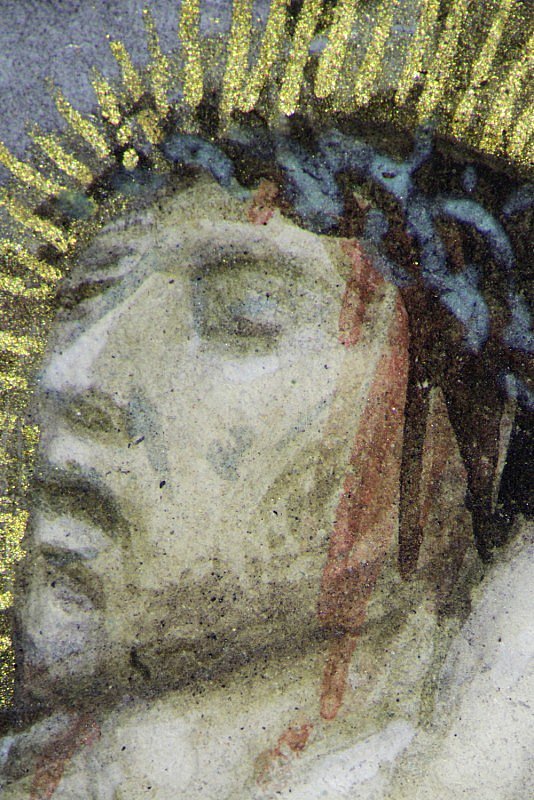Light effects
Artists' Techniques
Bening used shell gold and carefully blended or juxtaposed colours to simulate atmospheric effects and to recreate the impact of light on different materials and textures. He followed contemporary conventions in depicting a consistent light source illuminating all scenes and frames from the top left, and employed aerial perspective to create a sense of depth and to distinguish between picture planes (e.g. MSS 294a, 294c). Bening also explored the impact of additional light sources – divine, man-made or infernal. He used shell gold of varying density for the rays of the Holy Spirit emanating from the dove in the Annunciation miniature (MS 294b). He painted realistic flames in the fireplace that warms the newborn Mary (MS 294c). He reserved the most dramatic treatment and the most complex combination of pigments for the fire and smoke of Hell (MS 294d).





Crucifixion
This poignant scene shows the Virgin Mary, her companion and Saint John overwhelmed by grief at the sight of Christ’s suffering. Clustered near the base of the cross they keep vigil, with their eyes red and swollen from crying. The unrepentant thief on Christ’s left, having scorned the Saviour, has turned away. The good thief, aligned with Christ, his head strenuously lifted for a final gaze at the sky, embodies the hope for salvation.
Bening intentionally varied the flesh tones of the three crucified figures. Christ, pale and chalky in appearance, was painted with lead white and modelled with brown ochre and azurite blue in the grey shadows of his body and face (hotspot 1). The thief turned away from Christ was rendered with a mixture rich in yellow and brown ochres and azurite blue, perhaps his choleric flesh colour symbolically referencing his betrayal (hotspot 2). By contrast, the good thief is painted in a similar shade to that of Christ, though with slightly more vermilion red, with indigo blue in the shadows (hotspot 3). The subtle distinction in the colours used to paint the two thieves associates one with the Saved and the other with the Damned.